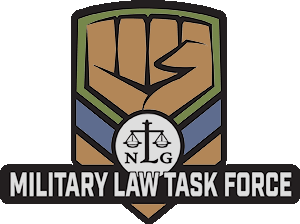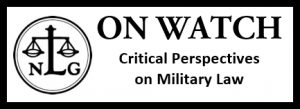by Peter Goldberger, MLTF, Ardmore PA
Let us celebrate Ann Fagan Ginger on her 100th birthday, July 11, 2025! In my estimation, Ann should be appreciated as one of the most outstanding figures in the history of the National Lawyers Guild. Her intellect, courage, creativity, and determination make her a worthy role model for all those who strive to combine the highest professional standards with a dedication to steady principles and a relentless determination to uplift and serve the powerless and oppressed.
Born in 1925, Ann was part of an in-between generation for the Guild, 15 or so years younger than the Old Leftists who were among NLG’s founders in the 1930s, and 15 or so older than the New Left generation that rejuvenated and remade the Guild in the 1960s and ‘70s. When Ann graduated law school at the University of Michigan in 1947, the Red Scare was ascendant. Already facing more than enough challenges as a talented woman in the legal profession at that time, it would have been much easier for Ann to “go along and get along” by abandoning or suppressing her progressive principles, as many others did in that time. But she wouldn’t and didn’t. After a few years practicing labor law in Ohio, she moved with her then-husband, a radical historian, to Boston for his job at Harvard. A couple of years later, the couple was forced to leave over their refusal to sign affidavits swearing they were not Communists.
That’s how Ann landed in New York, where she was hired as the half-time administrator for the Guild. To the credit of the too-often sexist all-male leadership of the time, her talents did not go unnoticed. Within five years, Ann had been named editor of The Guild Practitioner, NLG’s long-form journal. Also in the late ‘50s, she argued and won a case before the U.S. Supreme Court upholding the due process rights of one of her old Ohio clients who had been targeted by the state’s own “Un-American Activities Committee.” In 1962, Ann was the only female attorney to attend the first interracial meeting of civil rights lawyers to be held in the South, co-sponsored in Atlanta by the Guild and Dr. King’s Southern Christian Leadership Conference. There, she advocated for the Movement to embrace women’s rights as well.
Moving to Berkeley following a divorce, Ann created and maintained the Guild’s Civil Liberties Docket, a unique and essential compilation of otherwise unavailable pleadings and decisions arising out of the civil rights movement and other civil liberties litigation. But she was not just a scholar and editor. In October 1964, when asked to give legal advice to the University of California students thronging the campus as part of the Free Speech Movement, Ann climbed onto the roof of a police car (stranded in the middle of the crowd), grabbed a microphone, and loudly told the assembled protesters that the First Amendment gave them a right to refuse official orders to disperse. (The photo of Ann standing atop the police car, available at https://fsm-a.org/Person_pages/Ann_Fagan_Ginger.html, is priceless.)
Few lawyers in their career can fairly claim to have contributed a single truly original idea or concept. But I give Ann credit for two more, in addition to designing and maintaining the Civil Liberties Docket. In the early 1960s, she was one of those who envisioned how elements of administrative law, military law, constitutional law, habeas corpus, and federal criminal law could together make a new area of specialization called “draft law.” This, of course, was not an abstract intellectual concept, but rather was seen as a critical weapon in support of the growing movement to oppose the Vietnam War. And then again, in the 1980s, Ann had the vision to combine elements of public international law, military law, and constitutional law to form a unified field she called “peace law.” These efforts both supported activists in their campaign against nuclear weapons and encouraged greater appreciation for the United Nations and other treaty-based mechanisms to advance human rights and to impede future conflicts. In this, she honored the Quaker traditions of her father’s heritage. At numerous Guild gatherings and in other forums throughout the 1960s to the early 2000s, Ann spoke up and spoke out forcefully in support of these and other ideas.
Ann authored more than a dozen books, including a full-length biography of her early mentor, NLG co-founder and radical immigration law expert Carol Weiss King (U. Colo. Press 1993). She also served as editor of a two-volume anthology on The Cold War Against Labor (1987), and the Guild’s 50th Anniversary retrospective, The National Lawyers Guild: From Roosevelt Through Reagan (Temple U. Press 1988). In 1965, she created the independent nonprofit Meiklejohn Civil Liberties Institute in Berkeley, to hold and expand her archives of materials, which today can be researched through the university libraries at Berkeley, Michigan, and San Francisco State.
Ann continued into her late 90s to appear and speak at conferences, including a World Beyond War gathering in Oakland in early 2024. Her example is an inspiration to me and many others, although few if any of us will ever fully live up to her standards of intellectual creativity, boundless energy, and stalwart devotion to principle.


